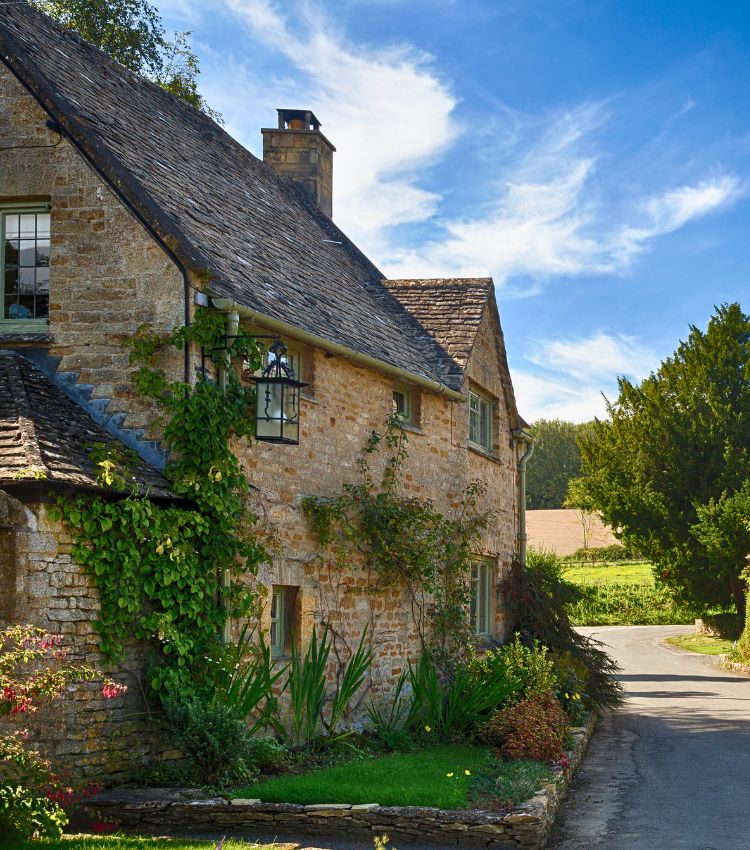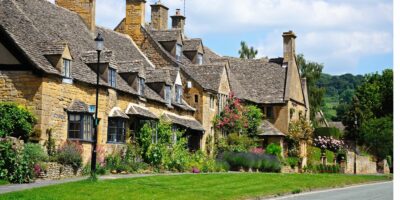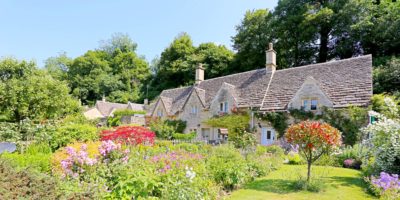
Buying a period home in the Cotswolds: What to know
With its rolling hills, villages of golden stone, and timeless appeal, the Cotswolds is a magnet for anyone dreaming of owning a period home.
But while the idea may sound idyllic, there’s more to buying a historic property than meets the eye.
From architectural styles and locations to planning restrictions and lifestyle practicalities, here’s what you need to know before taking the plunge.
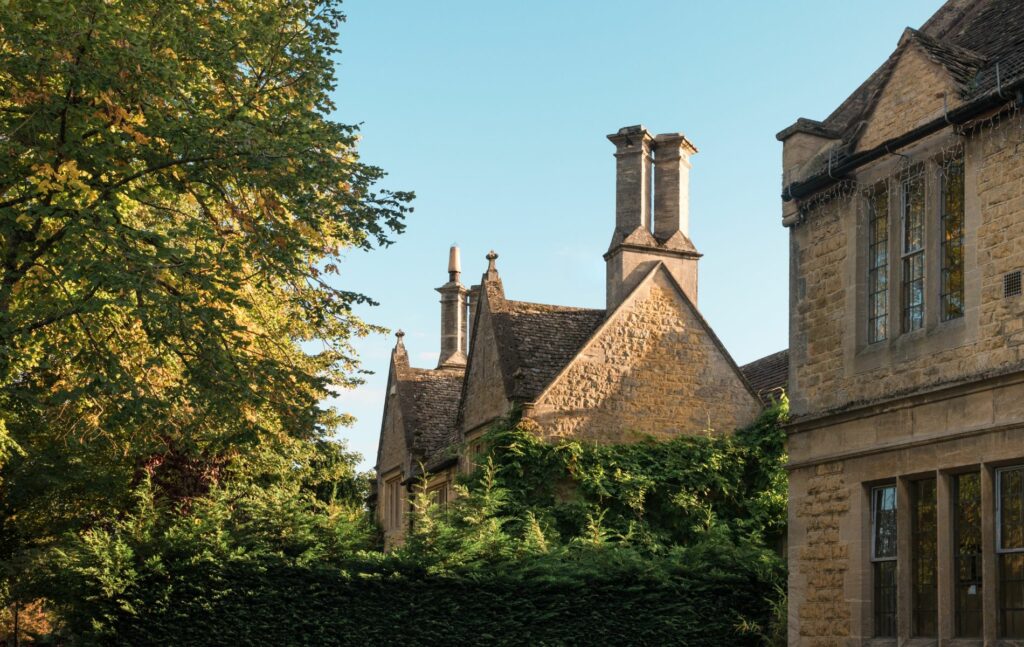
A history written in stone
The majority of the Cotswolds’ period homes are mid-17th to late-18th century due to the thriving wool industry in the area since before medieval times.
Following the arrival of the railway in the 1850s, the subsequent boom in trade brought larger workforces to the area, prompting a need for more housing, especially Victorian properties in towns with railway stations.
Today, many of those railway stations have been closed, following the Beeching Report in the 1960s.
Examples include Witney, which had a blanket-making industry dating back to the Middle Ages that soared in the 19th century, and Chipping Norton, home to the impressive Bliss Tweed Mill.
This grand building once processed locally sourced wool into tweed and has since been converted into apartments.
There are smatterings of Tudor properties, but these have often had Georgian or Victorian facades applied when fashions changed, and the area became increasingly affluent.
It’s very common to find properties with features spanning several centuries.
What types of period homes are in the Cotswolds
The Cotswolds is an architectural treasure trove. Within a single village, you’ll often find a mix of building styles spanning several centuries.
Stone cottages with steeply pitched roofs sit alongside handsome Georgian townhouses and elegant Victorian villas.
Thatched roofs are rare; tiled roofs (stone or slate) are the norm across all periods. And while you may come across timber-framed properties, they’re not as common as in some other parts of the UK.
For buyers of period homes, this blend of character, history, and charm is a major part of the appeal. The following are some examples of areas where you can find different styles of period homes:
Cheltenham
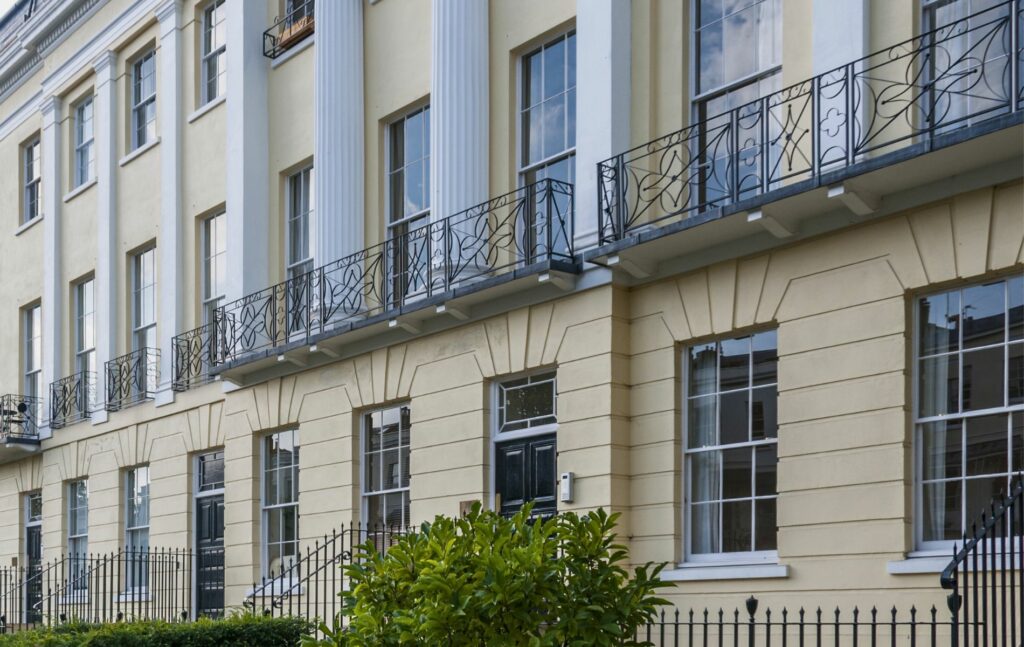
While many towns and villages across the Cotswolds offer architectural charm, Cheltenham deserves special attention.
Its Regency roots give it a unique character that sets it apart from the region’s predominantly rural stone-built heritage.
As one of the few Cotswold locations to offer elegant period homes in a town setting with a rich social and cultural calendar, it often appeals to a different kind of buyer.
That’s why we’ve taken a little more time to explore what makes it so distinctive. This handsome spa town is a showcase of Regency architecture at its finest.
Developed rapidly in the early 19th century following the discovery of its mineral springs, Cheltenham became a fashionable destination for the wealthy, attracting aristocrats, royalty, and society figures.
The architectural legacy of that period remains today, with wide boulevards, tree-lined promenades, and elegant terraces setting it apart from the more rural Cotswold villages.
Look out for classical stucco-fronted houses, grand villas, townhouses, decorative ironwork balconies, and dramatic crescents.
Burford
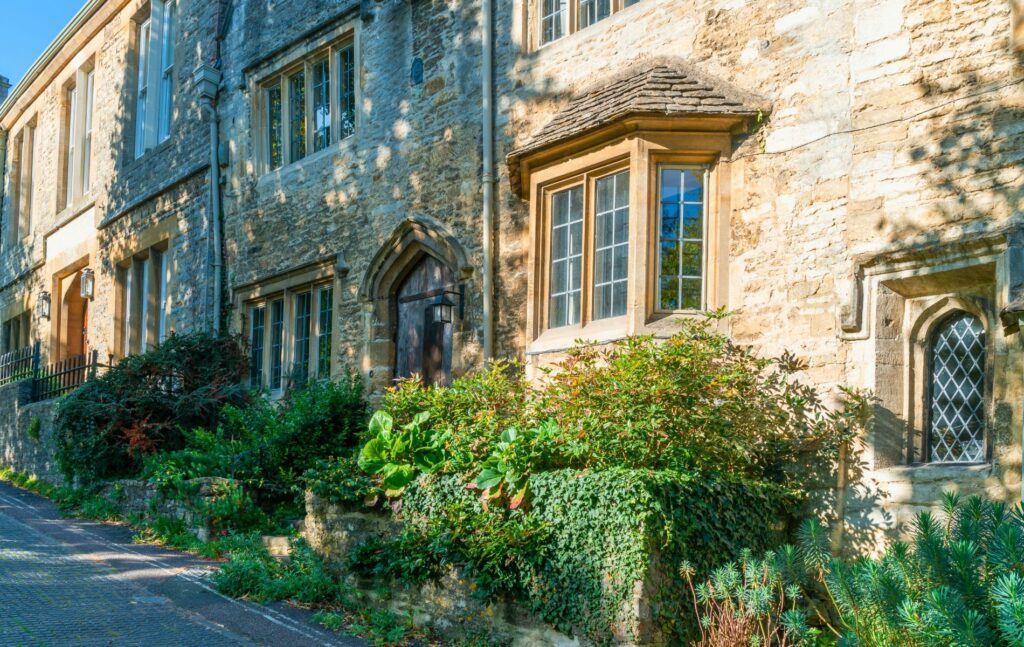
A medieval market town with steep streets and a strong sense of history, here you’ll find centuries-old stone houses and shopfronts, often minimally changed over time.
Burford is a charming mix of historic architectural styles, set on a hillside that gently slopes down to the River Windrush.
The Coln Valley
Villages along the Coln Valley, like Coln St Aldwyns, Quenington, Bibury, Ablington, Winson and Coln Rogers, offer quintessential rural beauty.
These are some of the most sought-after spots in the Cotswolds, with graceful, grey-gold cottages and farmhouses sitting quietly among river meadows and winding lanes.
Chipping Campden
A beacon of the Arts and Crafts movement, with beautifully detailed period homes crafted using local materials.
Chipping Campden has links to designer C.R. Ashbee and remains popular with those who appreciate heritage design and tradition.
Sapperton and Kelmscott
Both villages are also associated with the Arts and Crafts movement. Kelmscott was home to William Morris, whose love of traditional rural architecture helped inspire a design revolution.
Painswick
Dubbed the “Queen of the Cotswolds”, Painswick has an elegant, Georgian feel with fine stone buildings, narrow lanes, and the famous yew trees of its parish churchyard.

Bath
Though just outside the official Cotswold boundary, Bath is commonly included due to its cultural and architectural significance.
It’s famous for grand Georgian crescents, Roman baths, and honey-coloured buildings that echo the style of the wider region. It remains a popular destination for those seeking period homes with a city twist.
Listed buildings and conservation areas
When buying a period home in the Cotswolds, it’s essential to understand the legal protections that may apply to the property.
Much of the region is covered by listed building status or falls within conservation areas, both of which come with additional planning controls.
The Cotswolds region is the largest designated National Landscape (formerly called an Area of Outstanding Natural Beauty) in the UK.
The majority of listings in the Cotswolds are Grade II, which means they’re of special interest and any changes, inside or out, may require Listed Building Consent from the local authority.
This could include anything from replacing windows or roofing materials to changing the colour of the exterior paint or altering internal layouts.
In addition to listed buildings, the Cotswolds is home to more than 140 designated conservation areas.
These typically cover the most historically or architecturally sensitive parts of towns and villages, places like Bibury, Chipping Campden, Burford, Winchcombe, and Painswick, to name a few.
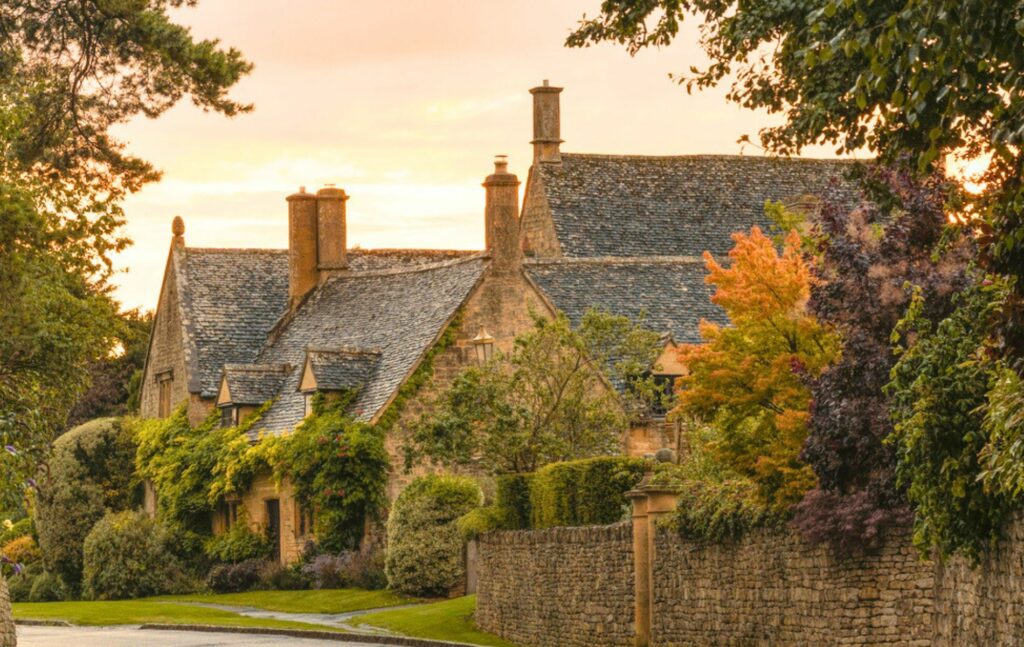
Conservation areas aim to protect the look and feel of a place, which means even small changes to the exterior of a home or its surroundings can require planning permission.
This might include adding a fence, removing a chimney, or cutting down mature trees. Windows, doors, porches, and boundary walls are also commonly covered under these controls.
The local planning authority publishes detailed conservation area maps and guidelines, so you can be clear about what is and isn’t permitted before making an offer. Or, of course, we can provide help and guidance.
Sympathetic restoration is usually encouraged. Using traditional materials like lime mortar, stone tiles, and timber-framed windows is not only often a condition of approval but also helps retain the property’s value and charm.
Renovating and maintaining a period home
Historic properties can be more demanding than modern ones when it comes to maintenance. Materials like lime render, natural stone, and hand-forged ironwork all require specialist care.
Repairs can be more expensive and time-consuming, but they’re also part of the joy of owning a period home with real heritage.
Before committing to a purchase, always commission a full building survey with a surveyor experienced in period homes. Look for potential issues like damp, roof condition, and structural movement.
Not all problems are deal-breakers, but they do need to be understood, especially in older buildings where quirks and character often come hand-in-hand with challenges.
Buying a period home in the Cotswolds
Buying a period home in the Cotswolds isn’t just about acquiring a property; it’s about investing in heritage, community, and lifestyle.
From the wool trade origins of many villages to the arrival of the railway and the architectural legacy it left behind, this region tells its story through stone and timber.
Whether you’re drawn to the artistic heritage of Chipping Campden, the Regency elegance of Cheltenham, or the storybook calm of Charlbury, there’s a home here that could be just right for you.
But be prepared: older homes demand patience, care, and research. Get expert surveys, understand the planning rules, and don’t underestimate the importance of sympathetic renovation.
Do it right, and you won’t just be buying a house, you’ll be stepping into the long and fascinating history of Cotswold life.
If you’re considering buying a listed building or a home in a conservation area, expert guidance can make all the difference.
Garrington Property Finders has in-depth experience navigating the unique challenges of period homes across the Cotswolds.
From identifying properties with the right potential to advising on planning restrictions and liaising with heritage specialists, at Garrington, we can help you make informed decisions and avoid costly surprises.
Please do get in touch for a no-obligation discussion about your property search.
